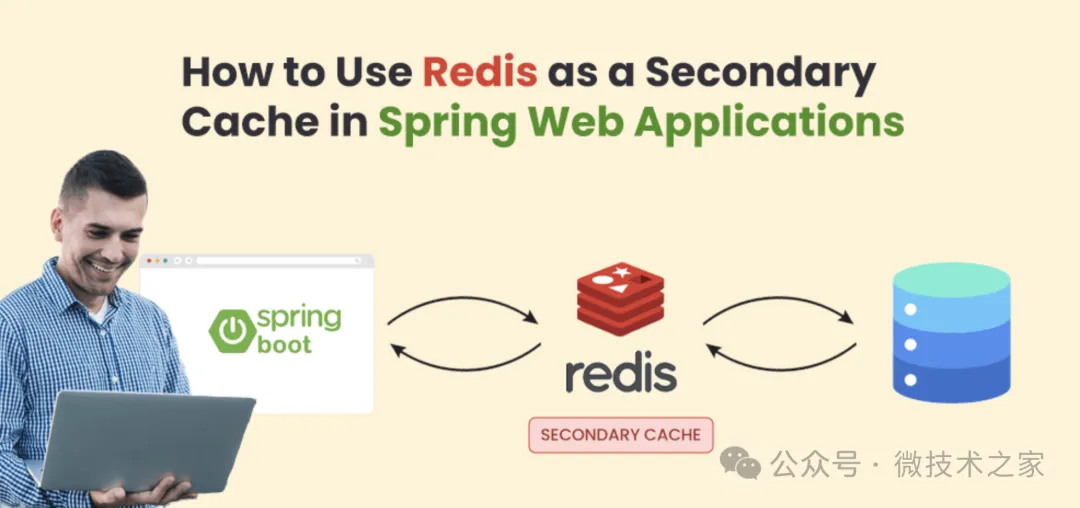在现代应用开发中,缓存是提升系统性能的关键手段。为了兼顾本地缓存的高性能和分布式缓存的扩展能力,常见的实现方式是结合使用 Caffeine 和 Redis 实现二级缓存架构。

本文将详细介绍如何通过 Spring Boot 实现一个Caffeine + Redis 二级缓存,并通过合理的架构设计和代码实现,确保缓存的一致性、性能和容错性。
一、 需求与挑战
1.多级缓存的需求:
- 一级缓存(Caffeine):快速响应,存储本地热点数据,减少对远程缓存和数据库的访问。
- 二级缓存(Redis):共享缓存数据,支持分布式扩展。
2.常见问题:
- 数据一致性:一级缓存和二级缓存之间的数据如何保持同步?
- 容错性:Redis 不可用时如何保证系统稳定运行?
- 缓存穿透:如何避免大量无效请求穿透缓存直接访问数据库?
- 高并发:如何避免缓存击穿导致数据库压力激增?
二、 缓存设计与解决方案
2.1 缓存查询流程
按照Cache-Aside 模式,缓存查询流程如下:
1.查询一级缓存(Caffeine):
如果命中,则直接返回结果。
2.查询二级缓存(Redis):
- 如果 Redis 有数据,则回填到一级缓存,并返回结果。
- 如果 Redis 查询失败(Redis 不可用),直接跳过。
3.查询数据源(数据库等):
如果 Redis 也未命中,则从数据源获取数据,同时回填到一级和二级缓存中。
2.2 缓存更新流程
- 数据更新或写入时,同时更新一级和二级缓存。
- 如果 Redis 写入失败,仅更新一级缓存,确保数据可用性。
三、代码实现
3.1 缓存接口设计
定义一个通用的缓存接口,便于不同实现类的扩展和切换:
3.2 Caffeine + Redis 实现
使用 Caffeine 和 Redis 的结合实现二级缓存:
3.3 空值缓存(防止缓存穿透)
为了避免查询不存在的数据穿透到数据库,可以将空值存储到缓存中:
3.4 异步更新 Redis(提升写性能)
为了提高写操作性能,可以将 Redis 的更新操作放到异步线程中:
在put和get方法中调用asyncUpdateRedis。
3.5 定时清理 Caffeine
Caffeine 默认是惰性清理(Lazy Cleanup)。如果需要主动清理,可以通过定时任务触发:

四、总结与优势
4.1 架构特点
- 性能更高:直接按一级缓存 -> 二级缓存 -> 数据库的顺序查询,减少了 Redis 可用性检查的开销。
- 降级容错:当 Redis 不可用时,不影响数据加载和缓存更新。
- 缓存一致性:通过回填机制,尽量保持一级缓存和二级缓存的数据一致性。
- 可扩展性:支持空值缓存、异步更新、主动清理等增强功能。
4.2 应用场景
- 高频访问的数据(如热门商品、热点新闻)。
- 分布式应用需要共享缓存的数据。
- 对性能和容错性有较高要求的业务场景。
通过 Caffeine 和 Redis 的结合,可以构建一个高效、灵活、稳定的二级缓存架构,有效提升系统性能并降低后端服务压力。































